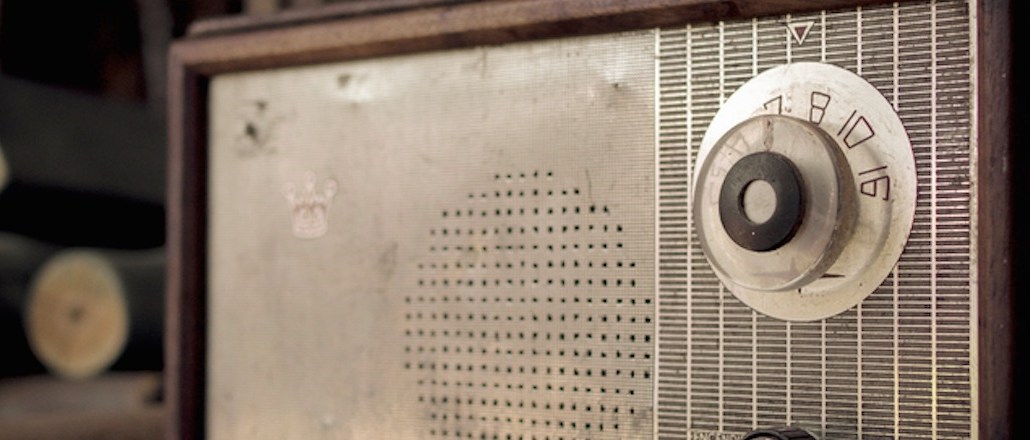
While many print publications are ramping up their podcast output, Monocle magazine went beyond and launched its own 24-hour digital radio station in 2011. It now has 1 million monthly listeners, double what it had last year, according to internal figures.
Monocle 24 runs four daily live shows, plus 40 individual weekly programs on topics like design (“Section D”), food (“The Menu”), foreign affairs (“The Foreign Desk”) and travel (“The Voyager”) all between 30 and 60 minutes in length. You can stream through the site, on the Monocle 24 Radio app, and find individual shows on podcasts platforms like iTunes, Soundcloud and Stitcher.
“We assumed that people would listen to the radio station who already knew the magazine,” Monocle’s executive editor, Steve Bloomfield said at the Professional Publishers Association (PPA) Festival in London last week, “but we found a whole new audience for our magazine through the radio program.”
Monocle launched in 2007 covering current affairs and culture in, according to Bloomfield, a more global and optimistic way than others. Its circulation has risen gradually; in 2015, the ABCs recorded a circulation of nearly 80,200, an increase of just 0.2 percent from the previous year. Monocle’s website is a repository for its audio and visual content rather than another way to access the articles published in the magazine.
“We thought there was space for a smart, international radio station that was informed but not as dull as what was currently on offer,” Bloomfield told Digiday. Keeping the Monocle tone was one of the main challenges. Producing a low-fi podcast with no resemblance to the magazine wouldn’t work. The radio program needed to be high quality, with well-known voices from the magazine. To keep the continuity, the magazine section editors write and present the corresponding radio program.
https://soundcloud.com/monocle-24-the-menu/the-menu-the-nordic-effect
Sounding professional doesn’t come cheap. As an independently owned company, each new thing Monocle does has to be self-sufficient. It built a high-end radio studio, hired producers and engineers — behind the mic is a team of 20 engineers, producers and researchers on the radio station — and trained existing staff in presenting.
Monocle also gained an extra 750,000 listeners through commercial agreements with radio stations ABC Australia and CBC Canada, each of which takes between six and eight Monocle 24 programs a week, as more traditional radio stations look for quality programs to fill airspace.
Monocle 24 is ad-funded and is financially viable, but Bloomfield wouldn’t go into specifics. Brands, such as UBS, Turkish Airlines, Air Canada and Allianz pay to sponsor the shows, but have no editorial control. “Being more integrated is definitely to a brand’s benefit,” said Emma Moorhead, head of AV planning at media agency MEC. “Most podcasts have small audiences, but then, of course, they can be really targeted, although you can’t get that kind of scale.
One of the daily news shows, “The Briefing,” which goes out at 12 p.m. GMT, is sponsored by Air Canada and starts with a 20-second pre-roll ad created by Monocle. “We make the ads for them so they don’t jar with the radio aesthetic,”said Bloomfield.
https://soundcloud.com/monocle-24-the-briefing/the-briefing-edition-1177
“Radio advertising used to be for car dealers, broken windscreens and energy deals,” he added. “Now we’ve got the biggest banks and airlines in the world sponsoring our radio programs, proper blue-chip commercial partnerships. That was unheard of five years ago.”
It’s also a far cry from the more regular sponsorship deals in other podcasts from internet companies like MailChimp, the sponsor brand for Serial, said Rafe Blandford, mobile strategist at DigitasLBi. “Many brands wouldn’t be comfortable with that direct response, voucher redemption offer,” he added. “Overall, podcasts have been difficult to monetize partly because the metrics have been poor compared to other digital mediums.”
This goes for Monocle as well, even in spite of being more nimble than other legacy media companies. A full 80 percent of Monocle’s listeners listen from downloads (20 percent live). Counting downloads is easy enough, but there’s no way of knowing whether people actually listen. Varying metrics on platforms are also a problem. Soundcloud, for instance, measures short listens (under one minute) and long listens (over a minute).
Still, Monocle will continue to invest in digital audio, adding two new shows to a refreshed schedule this year. “People are interested in the intimacy of podcasts,” said Bloomfield. “Our readers feel like they know us because they listen to us. Monocle is far greater than ever before because people can listen to us.”
More in Media

Digiday+ Research: Publishers’ growing focus on video doesn’t translate to social platforms
Major publishers have made recent investments in vertical video, but that shift is not carrying over to social media platforms.

Technology x humanity: A conversation with Dayforce’s Amy Capellanti-Wolf
Capellanti-Wolf shared insight on everything from navigating AI adoption and combating burnout to rethinking talent strategies.

How The Arena Group is rewriting its commercial playbook for the zero-click era
The company is testing AI-powered content recommendation models to keep readers moving through its network of sites and, in doing so, bump up revenue per session – its core performance metric.





